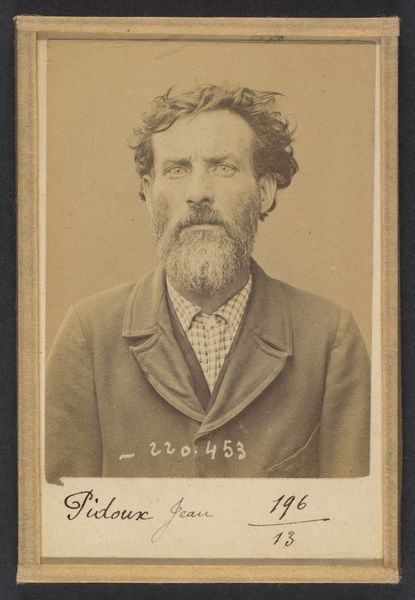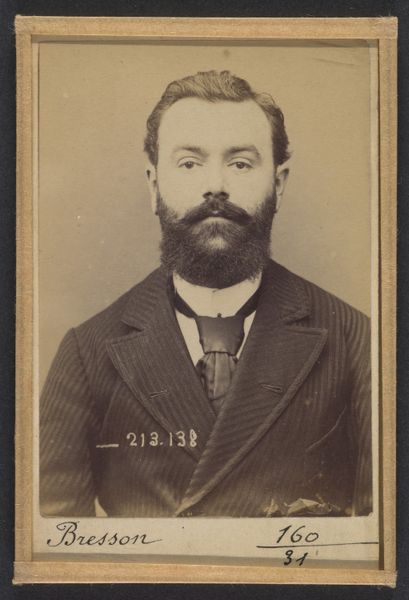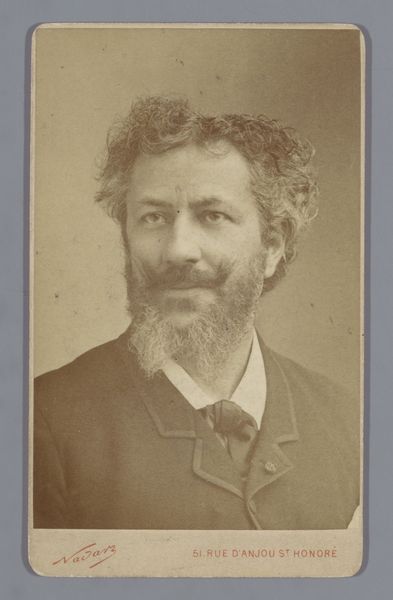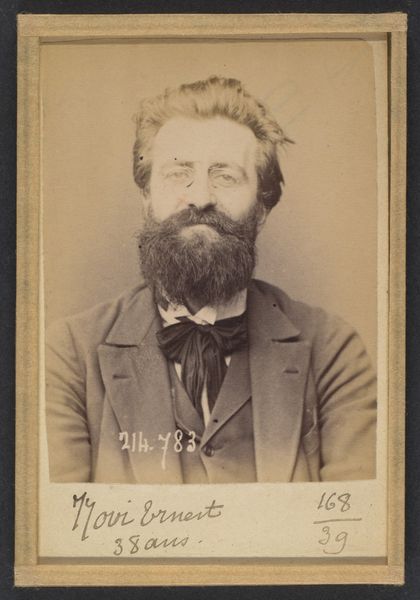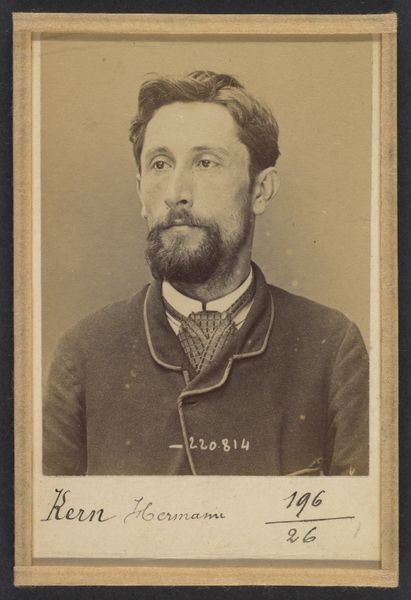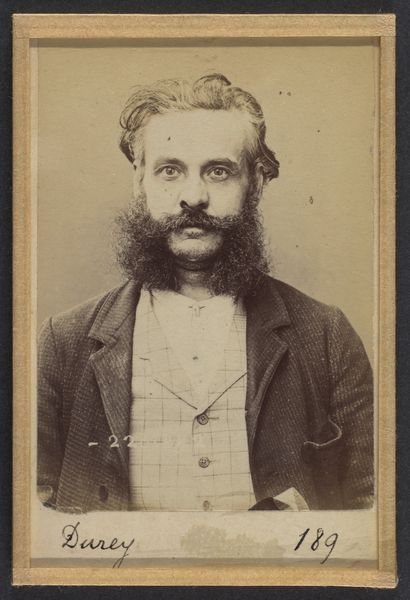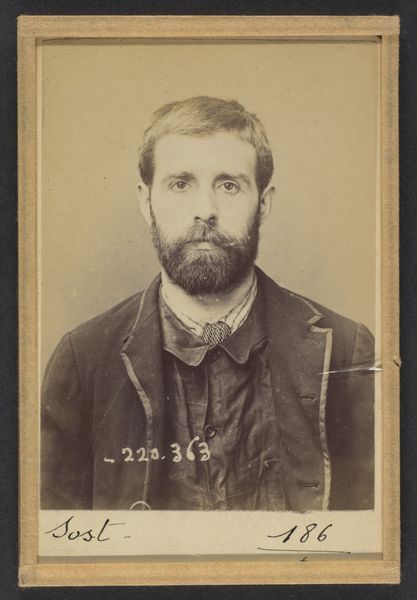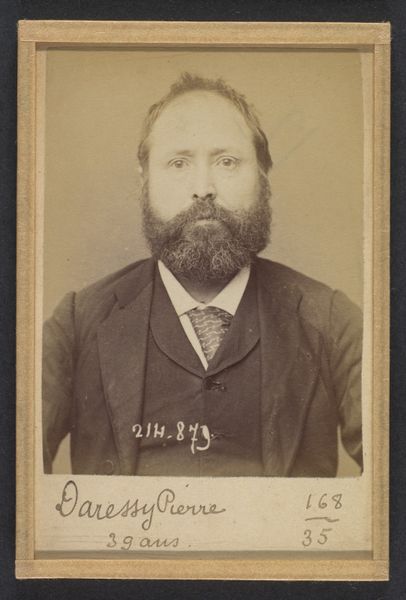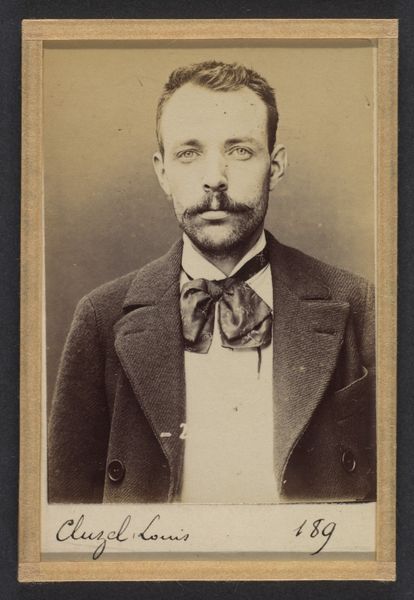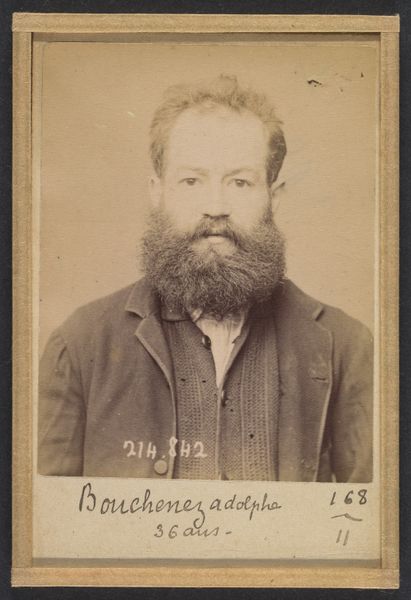
photography, gelatin-silver-print
#
portrait
#
portrait
#
impressionism
#
photography
#
gelatin-silver-print
Dimensions: 10.5 x 7 x 0.5 cm (4 1/8 x 2 3/4 x 3/16 in.) each
Copyright: Public Domain
Editor: This is Alphonse Bertillon's "Matha," a gelatin silver print taken sometime in the 1880s or 1890s, now at the Metropolitan Museum of Art. The image is very sepia-toned, which makes the subject seem both familiar and distant. What kind of statement do you think the artist makes in it? Curator: Notice how the sitter avoids direct eye contact. The averted gaze creates a certain ambiguity, inviting us to project our own narratives onto him. The inscription further dehumanizes him. How does that impact your reading of his character? Editor: I suppose it forces us to look for clues beyond his expression. His clothing seems relatively respectable for the era, yet the numbering clashes with that. The name doesn't offer much context either, so he remains inscrutable. Curator: The use of photography in this period often served purposes of documentation and control, particularly with figures marginalized or outside societal norms. The formal pose and the detailed capture of his features seem like a move to categorize him in some way. Does the photograph take on a symbolic meaning for you? Editor: Well, considering the time, and its scientific leanings, it probably does have more meaning than initially expected, which probably has been lost on the contemporary audiences. Thanks for pointing that out. Curator: And thank you for engaging with the symbols embedded within this image! It makes one think how such works are products of both art and the culture that generates it.
Comments
No comments
Be the first to comment and join the conversation on the ultimate creative platform.
